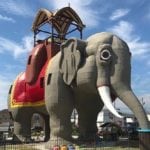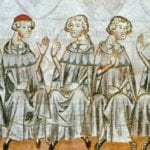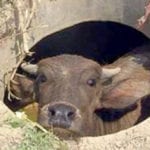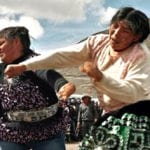 Technology
Technology  Technology
Technology  Our World
Our World 10 Ways Icelandic Culture Makes Other Countries Look Boring
 Misconceptions
Misconceptions 10 Common Misconceptions About the Victorian Era
 Mysteries
Mysteries 10 Strange Unexplained Mysteries of 2025
 Miscellaneous
Miscellaneous 10 of History’s Most Bell-Ringing Finishing Moves
 History
History 10 Great Escapes That Ended Right Back in Captivity
 Weird Stuff
Weird Stuff 10 Fascinating Things You Might Not Know About Spiders
 Food
Food 10 Everyday Foods You Didn’t Know Were Invented by the U.S. Military
 History
History 10 Odd Things Colonial Americans Kept at Home
 Weird Stuff
Weird Stuff 10 Superstitious Beliefs That Once Consumed Entire Cultures
 Technology
Technology 10 Scientific Breakthroughs of 2025 That’ll Change Everything
 Our World
Our World 10 Ways Icelandic Culture Makes Other Countries Look Boring
 Misconceptions
Misconceptions 10 Common Misconceptions About the Victorian Era
Who's Behind Listverse?

Jamie Frater
Head Editor
Jamie founded Listverse due to an insatiable desire to share fascinating, obscure, and bizarre facts. He has been a guest speaker on numerous national radio and television stations and is a five time published author.
More About Us Mysteries
Mysteries 10 Strange Unexplained Mysteries of 2025
 Miscellaneous
Miscellaneous 10 of History’s Most Bell-Ringing Finishing Moves
 History
History 10 Great Escapes That Ended Right Back in Captivity
 Weird Stuff
Weird Stuff 10 Fascinating Things You Might Not Know About Spiders
 Food
Food 10 Everyday Foods You Didn’t Know Were Invented by the U.S. Military
 History
History 10 Odd Things Colonial Americans Kept at Home
 Weird Stuff
Weird Stuff 10 Superstitious Beliefs That Once Consumed Entire Cultures
10 Of The Strangest Groups Of Fighters To Go To War
If there is one area where humans continually like to get creative, it’s war. Sure, you always have the infantry and the cavalry, the air force and the navy, but you also have the . . . others. These are peculiar and certainly original special units that have their own roles to play.
10The Ghost Army
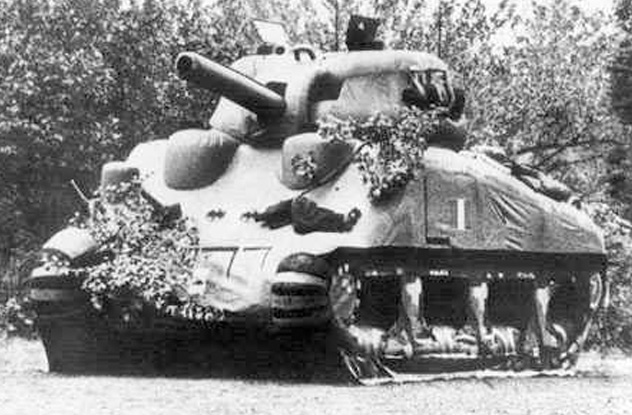
You would think that a prerogative of any army would be to fight. However, that was not the case with the Ghost Army, a US special tactical unit deployed in World War II. It carried out its mission successfully, and it never had to fire a single shot.
The unit in question was the 23rd Headquarters Special Troops. It contained 1,100 soldiers who had very little training in the way of fighting. Rather, they were actors, illustrators, designers, radio operators, and sound engineers. The unit even included soon-to-be famous artists like photographer Art Kane and painter Ellsworth Kelly.
The purpose of the unit was to get as creative as possible in finding ways to mislead and deceive the German army. They blasted army noises over speakers and sent phony radio transmissions. They built fake constructions to draw enemy fire, and actors pretended to be drunk generals in bars to weed out spies. Over 20 such missions were carried out, estimated to have saved 15,000–30,000 lives.
One soldier, Arthur Shilstone, recalls the look of amazement on two Frenchmen’s faces when they saw four of them pick up and walk off with a Sherman tank. The tank was actually inflatable, but Shilstone gave a much simpler explanation to the befuddled Frenchmen: “Americans are very strong.”
961st Cavalry Unit
There was a time when cavalry units were an absolutely indispensable part of any army. However, in the meantime, we invented various devices with wheels and engines in them, so horses took a secondary role. But they’ve not been phased out altogether. India, for example, still retains its 61st Cavalry Unit, the largest non-ceremonial horse-mounted unit in the world.
This is an operational unit. That means that it is still deployed whenever the need arises, typically as a backup police force nowadays. However, it did see combat as late as 1971 during the Indo-Pakistani War. Riders join the 61st on a volunteer basis, but about one-third of volunteers are sent back because of their insufficient riding skills.
These days, the unit doesn’t see a lot of action and is typically reserved for parades. One area where members of the unit excel is polo. Their equestrian skills have translated well to the sport, and the unit has included several proficient Indian polo players.
8The Filthy Thirteen
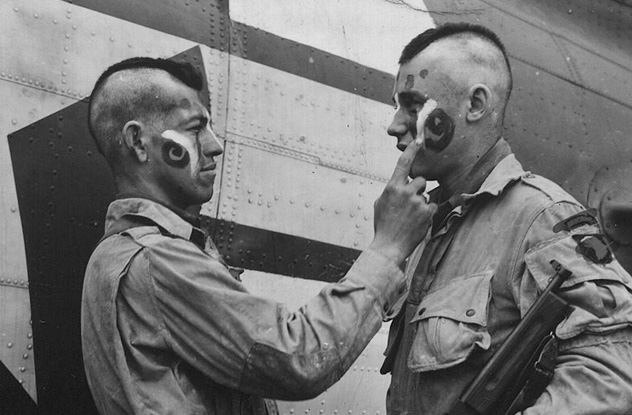
The name similarity is not a coincidence—the Filthy Thirteen were the real-life inspiration for The Dirty Dozen, a book by E.M. Nathanson that became one of the most iconic war movies in history. However, the book was mostly inspired by a magazine article about the Filthy Thirteen, one that embellished quite a few things. The real soldiers weren’t convicts or murderers, but they were a group of misfits. According to leader Jake McNiece, they had “no respect or discipline to show to officers or really any of the regulations.”
The unit was officially the 506th Parachute Infantry Regiment, 101st Airborne Division during World War II. During the invasion of Normandy, they blew up a bridge to stop German reinforcements. Before the Battle of the Bulge, they went deep into enemy territory to perform reconnaissance.
The Filthy Thirteen were tasked with incredibly dangerous but essential missions. Because of this, they knew they were indispensable, which is what allowed them to act the way they did. According to McNiece, their barracks were always a mess (hence the name), and they went AWOL every weekend to party. They stole jeeps and trains, blew up barracks for fun, and stole the colonel’s whiskey. But the worst reprimand they ever got was a few days in the brig.
7Lovat Scouts
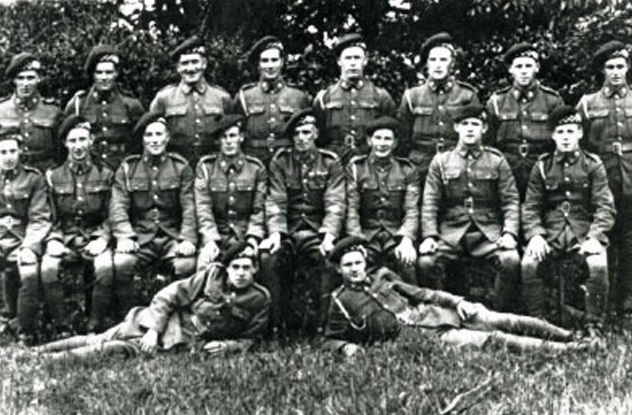
The Lovat Scouts was a special regiment made up of Scottish Highland yeomanry units formed by a British lord, commanded by an American major, and sent to fight in a South African war. It was created in 1900 by Simon Joseph Fraser, the 14th Lord Lovat, to fight in the Second Boer War against the South African Republic. The unit was commanded by Major Frederick Russell Burnham, an American who afterward returned to the United States and founded the Boy Scouts of America.
When the war was over, the Lovat Scouts were disbanded, but they reformed just a year later, this time in two regiments. Both saw plenty of action during World War I. By this time, the regiments had already established themselves as some of the best scouts in the world, but they also started specializing as snipers (or sharpshooters, as they were called back then).
Eventually, this led to the formation in 1916 of the Lovat Scout Sharpshooter Unit, which became the first sniper unit in the British Army’s history. The unit itself didn’t last very long, as it was deemed too small to function effectively as an independent entity, but the Lovat Scouts still introduced an element still used today by most sniper units—the ghillie suit.
6Ritchie Boys
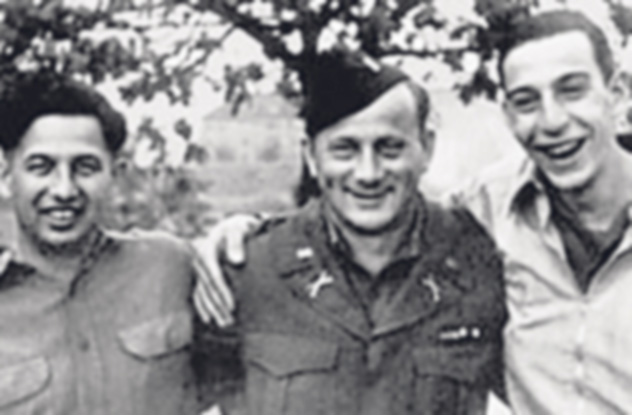
The Ritchie Boys was a special US military unit during World War II made up mostly of young Jewish men (the majority of them teenagers) from Germany and Austria. The unit comprised thousands of members who were either drafted or volunteered into the army once they arrived in the country. Many of them were just children when they immigrated and reached the United States without their parents.
They were all trained at Camp Ritchie, hence the name, but their expertise focused not on armed combat but on intelligence. Despite being very young, the Ritchie Boys went to the front line or even behind enemy lines to gather intelligence, perform interrogations, and engage in psychological warfare. Their biggest asset was their understanding of the German language as well as German culture, so they fit in much better than American spies.
At first, they mostly dealt with low-level German soldiers. These were all young draftees like themselves, so a gentle approach almost always worked. Then came D-Day. All of a sudden, the Ritchie Boys were dealing with the Nazi higher-ups. One of the few surviving Ritchie Boys, Ed Holton, recalls interrogating Hermann Goering at one point. He also interrogated an SS Brigadefuhrer called Walter Schellenberg. Holton describes him as a “terrible man” who claimed that his only regret was a design flaw in the gas chamber he used.
5Jessie Scouts
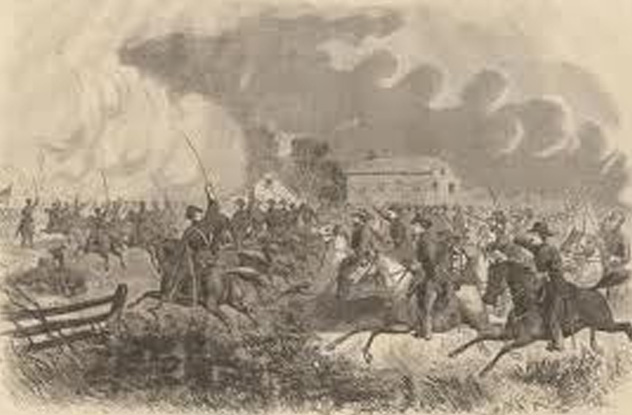
The Jessie Scouts was a small group of irregular soldiers numbering no more than 60 fighting for the Union during the American Civil War. They operated on Confederate territory in insurgency missions, collecting information regarding the condition and movements of enemy forces. They scouts would typically dress up in Confederate uniforms to fit in. This actually put them at risk not only of being caught as spies by the Confederacy but by getting attacked by Union supporters as well.
The Jessie Scouts were led by Captain Charles Carpenter, and they soon gained a reputation for quite colorful (although very useful) adventures. Carpenter himself recalled an occasion when he had to dress up as a woman to send a letter as he was escorted the whole way by a rebel officer.
Carpenter also remembered an incident involving Henry Hale, a fellow Jessie Scout, who was on his way to Lexington to deliver some dispatches. On the way, he encountered an old secessionist and thought it would be funny to take his horse. Hale pointed his gun at him, ordering him to drop his weapon, dismount the horse, and run away. Hale continued his journey, horses in tow, whistling “Yankee Doodle Dandy.” However, the secessionist managed to catch up to him, armed with another gun, and ordered Hale to disarm and dismount. He also demanded that Hale take off his pants. The old man then left with the horses, whistling “Dixie,” and Hale had to walk 11 kilometers (7 mi) to Lexington naked.
4A Force
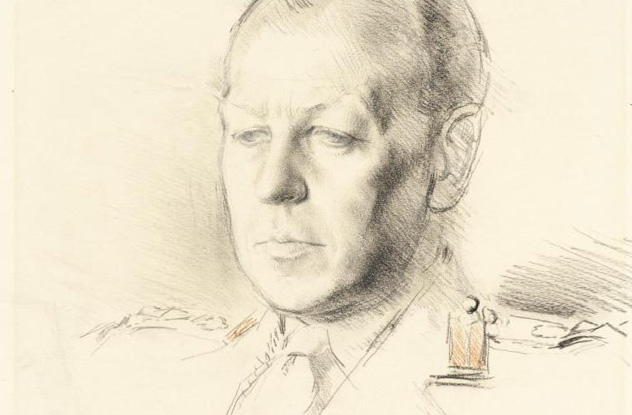
The formation of the aforementioned Ghost Army during World War II was really inspired by the work done by A Force, the premiere British covert intelligence unit. The driving force behind the unit was its founder, top British spy Dudley Clarke. Initially, Clarke was strictly a one-man show. He handled mostly Middle Eastern operations and worked alone. During one operation, though, Clarke had to invent a fictional unit that he dubbed “A Force.” Later on, the unit came to life, specializing in deception and counterintelligence.
A Force continued to operate in the Middle East and North Africa and was heavily involved during the battle of El Alamein in Egypt. Clarke spearheaded Operation Torch, which was a success and ensured that the Germans were taken by surprise when Allied forces invaded French North Africa in November 1942. At the same time, A Force also oversaw Operation Treatment, a mission to trick the Germans into thinking that the counteroffensive at El Alamein would come two weeks later than actually planned.
Despite all of Clarke’s success, he’s nowadays mostly remembered for one odd incident when he was arrested in Madrid during a mission dressed in drag. A photograph of him dressed as a woman circulated throughout Europe and caused quite a stir at the British Consulate. Fortunately, Clarke managed to convince Spanish forces that he was a war correspondent for The Times who “wanted to study the reactions of men to women in the streets.”
3Merrill’s Marauders
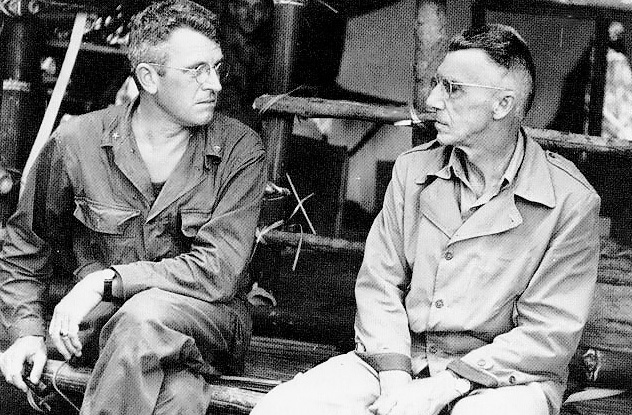
In war, there will always be a need for a special unit ready and willing to do the dangerous missions that nobody else wants. That’s where Merrill’s Marauders came in. They were officially named the 5307th Composite Unit (Provisional), and their designation was “Galahad,” but they was popularly known as “Merrill’s Marauders” in honor of their leader, Brigadier General Frank Merrill.
The Marauders were a long-range penetration special operations jungle warfare unit. In other words, they went deep behind enemy lines. They were formed in 1943 after a request from President Roosevelt looking for volunteers for “a dangerous and hazardous mission.” When over 3,000 soldiers volunteered, the Marauders were split into six combat teams of 400 men each.
After training in India, the Marauders headed into Japanese-controlled Burma. Here, they took part in five major combat engagements and dozens of minor ones, culminating with the strike at Myitkyina, despite almost always being outnumbered. This fight took place after 80 days of trekking over 800 kilometers (500 mi) in rough and dangerous terrain. Almost all the men were sick, suffering from infections, fever, or dysentery.
Even so, Myitkyina had an airfield that could resupply units in the area, so it was a valuable target. From May to August 1944, the Marauders and the Japanese fought for control of the city, with each side taking turns in gaining the upper hand. Eventually, the Marauders received Chinese reinforcements and finally managed to take over the city.
2Mormon Battalion
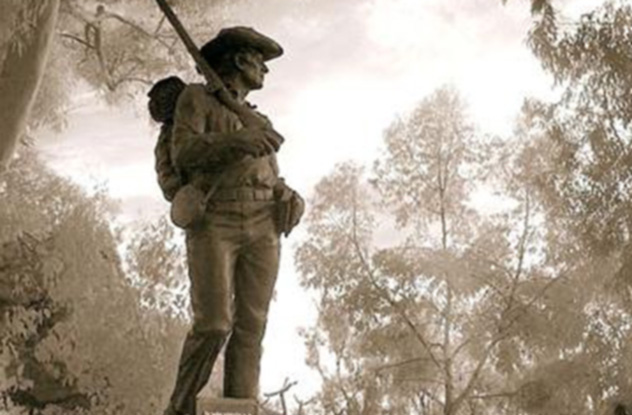
The Mormon Battalion has the distinction of being the only religion-based military unit in US history. It formed in 1846 during the Mexican-American War from roughly 550 Latter-day Saints volunteers. These people were enlisted not to fight but to help colonize California and ensure a good relationship between the United States government and the Mormon immigrants looking to get established there.
Normally, a unit would only include men aged 18 to 45. The Mormon Battalion had members as young as 14 and as old as 67, and they were accompanied by 33 women and 51 children. Together, roughly 600 people embarked on a 3,250-kilometer (2,000 mi) trek from Council Bluffs, Iowa all the way to San Diego, California.
During this adventure, members of the battalion witnessed multiple notable events that occurred around that time. They arrived just after the Temecula Massacre and helped the Luiseno tribe avoid further bloodshed. They were present near the rivers of California after gold was first discovered there in what would become the California Gold Rush just a couple of years later. They even stumbled upon the aftermath of the Donner Party disaster and helped bury the remains of those who were cannibalized.
1Scallywags
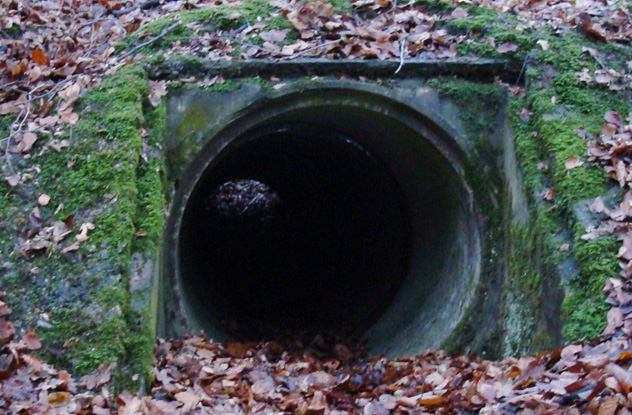
There was a time during World War II when Nazi Germany exerted its dominance over most of Europe. The majority of mainland Europe was either allied or occupied by the Nazis, and it was firmly believed that it was only a matter of time until the United Kingdom followed suit. Plans were made for an underground resistance movement that would engage in guerilla warfare should that possibility become a reality.
Officially, they were simply called the Auxiliary Units. However, they would soon be better known as the Scallywags, named after “scallywagging,” the term they used for carrying out covert missions at night. The special unit was formed in 1940 and ended up comprising 3,000–6,000 members.
Officially, they were part of the Home Guard. That was their cover because the true nature of their assignment was highly secretive. The Scallywags only operated in small groups of seven or eight people, and each man knew nothing about anyone outside his group, so he wouldn’t be able to provide any information should he get caught.
Anyone could be a member. Gamekeepers, dentists, and even clergymen were part of this secret underground movement. The only proof of their undercover work that they would carry with them was a phone number given to policemen if they were arrested.
Radu is a history/science buff who is still trying to work out that Twitter thing.

